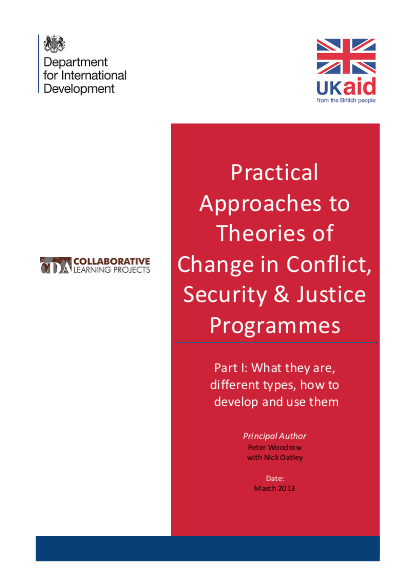
This paper is part of a series of guidance products focused on measuring results in conflict, justice and security programmes. All of these programme efforts seek to promote positive change in situations of on-going tension and state fragility. If we are to measure results, we need to be clear about the changes we expect to see and the pathway for getting there. Articulating the theory of change helps us do that. The OECD DAC Guidance “offers theories of change as one way to help evaluators assess and programme managers and decision makers think through the hypotheses of change and assumptions that underpin their work”1. At its best, working with theories of change is a process in which we can think through proposed or existing programming in order to examine whether activities will add up to intended project or programme results—and whether a range of programmes will add up to higher level sectoral or even country level outcomes.